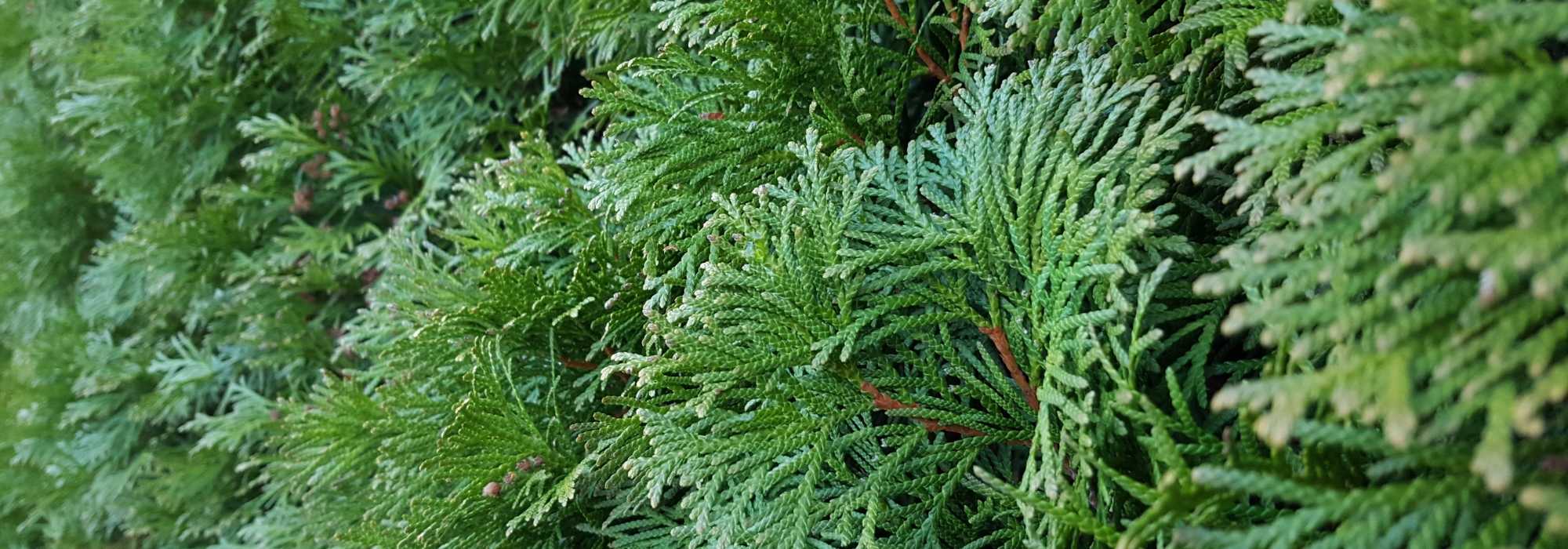
Fast-growing hedge: 10 shrubs for quick growth hedge
Our selection
Contents
Planting a fast-growing hedge is often the first instinct after building a house, even before planning the garden layout. A hedge that grows quickly indeed helps to preserve privacy, break the wind, and attenuate noise disturbances. To meet these needs, we have selected species of shrubs for fast-growing hedges, valued for their vigour, ease of cultivation, dense habit, and good tolerance to pruning. Even though these plants are low-maintenance, it remains essential to respect their preferences regarding soil and climate, and to favour the planting of young plants, which are better suited to root deeply and withstand the early years of growth. Among them, certain species like privet stand out as essentials for creating a fast-growing evergreen hedge, tall and aesthetic, ideal for those seeking a hedge that grows quickly with little maintenance. But it’s not just privet: discover our selection of bushes suitable for creating a fast-growing hedge, perfectly aligned with the needs of your garden!
Photinia: the shrub for evergreen hedges
The Photinia x fraseri is a hybrid that has become a globally successful hedge shrub in just a few decades due to the persistence of its foliage combined with the bright red or bronze colour of its young shoots and its ease of cultivation. The tree tolerates pruning very well, which induces a new colouration of the hedge, and can also be associated with other evergreen and deciduous hedge plants such as forsythias, Japanese quinces, and shrimp willows…
- Advantages: Photinia x fraseri appreciates any light, well drained soil, preferably humus-bearing, acidic, neutral or slightly calcareous. It will thrive in sun or light shade. The fragrant flowering attracts pollinating insects.
- Disadvantages: It is particularly sensitive to compact clay and overly calcareous soils. Lack of sunlight dulls the young shoots. It is also important to avoid locations exposed to cold, dry winds for this moderately hardy hybrid, tolerant down to -18°C.
- Average growth rate: 50 cm to over 60 cm per year from the second year of planting.
- Planting distances: Space the plants 80 to 100 cm apart to quickly form a hedge.
- Pruning, maintenance: Pruning should be carried out at least twice a year for plants grown in a hedge: in July, after flowering, and in August-September or after autumn growth.

Discover other Hedge shrubs
View all →Available in 0 sizes
Available in 1 sizes
Available in 1 sizes
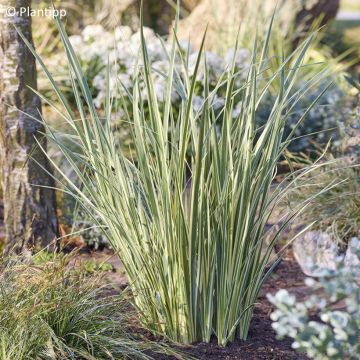
Available in 1 sizes
Available in 1 sizes
Available in 1 sizes
Available in 1 sizes
Available in 2 sizes
Available in 1 sizes
Available in 1 sizes
Privet: for a quick hedge
The privets are the most commonly used bushes for quickly creating hedges between 1 and 4 m in height. The common privet (Ligustrum vulgare), capable of reaching 4 to 6 m in height, is semi-evergreen. The California privet (Ligustrum ovalifolium), with ovate leaves, loses some of its foliage during severe frosts that can reach -28°C.
- Advantages: These decorative hedges, with sometimes variegated leaves, are hardy, very easy to maintain, tolerate pollution well, and are more ecological than conifer hedges. The fragrant flowering attracts pollinating insects, while birds enjoy nesting in them and feasting on the fruits. Additionally, it is easy to plant other plants at their base. Privets tolerate all types of well-drained soils, even dry, calcareous, or even very calcareous for ovalifolium, full sun as well as partial shade, and are resistant to de-icing salts.
- Disadvantages: Privets are quite resistant to pests and diseases but can be affected by otiorhynchus larvae and caterpillars.
- Average growth rate: 30 to over 40 cm per year from the second year of planting.
- Planting distances: Space the plants 70 to 80 cm apart.
- Pruning, maintenance: Cut back the shoots by half at the end of winter and between July and September to densify the foliage.
Read also
How to plant a hedge?
Elaeagnus x ebbingei: evergreen and fragrant
The Eleagnus or Chalefs are small, bushy trees with evergreen foliage, and their very vigorous growth requires two annual prunings. The cream flowering is discreet but emits an intense jasmine scent, making it highly melliferous in September-October. The small coppery berries that follow are edible and appreciated by birds.
These trees, ranging from 2 to 6 m in height, tolerate repeated pruning well, adopting a compact bushy form of 1.5 to 3 m in height. They produce shoots exceeding 60 cm that should be cut back by a third in the first few years.
- Advantages: These very hardy bushes (-20°C) tolerate all exposures, wind, drought, and sea spray, allowing them to grow in sand near the sea.
- Disadvantages: The only constraints are that they do not like chalky soil and waterlogged conditions and that the wood becomes very hard after lignification. Protect young plants during the first winter with a windbreak cloth if the location is very exposed and with a thick mulch of fern fronds or fallen leaves.
- Average growth rate: 50 cm to over 60 cm per year from the second year of planting.
- Planting distances: Space the young plants 1 m apart.
- Pruning, maintenance: Remember to prune when the wood is still soft in June and then again in January.

Escallonia 'Donard Seedling': for a resilient evergreen hedge
The Escallonia Donard Seedling is an evergreen bush that features small, glossy bright green leaves, speckled with pale pink flowers that become almost white at ripeness and are slightly fragrant. The Donard Seedling cultivar blooms for about a month between May and September and is particularly accommodating, accepting acidic, neutral to calcareous soils unlike other cultivars.
Plant it preferably in a sunny area in spring or early summer, and mulch well around the base with fallen leaves during the first winters. It can be paired with other series of flowering bushes within the hedge such as Choisya ternata, Pittosporum tenuifolium, or Olearia traversii…
- Advantages: The ‘Donard Seedling’ Escallonia is a floriferous bush that grows vigorously by the sea and forms a hedge up to 2 m resistant to wind, salt spray, and drought. Full sun as well as shade can encourage it to bloom.
- Disadvantages: The Escallonia does not appreciate harsh winters (-10°C) and icy winds; its foliage scorches from -10°C. However, it easily regrows from the base once well established. It is sensitive to very heavy soils, excess lime, and stagnant moisture, especially in winter.
- Average growth rate: 30 to over 40 cm per year from the second year of planting.
- Planting distances: Space the plants 80 cm apart.
- Pruning, maintenance: Prune them once or twice a year in February and September.

Forsythia: shrub for vibrant flowering hedge
Mimosa of Paris or Forsythia is a familiar bush in our gardens, easily recognised by its bright yellow flowering, one of the first in spring. It is extremely popular and can be used both as a hedge and in borders alongside daffodils and Japanese quince, or even as a standalone specimen. To create a medium to tall hedge, plant upright cultivars such as Lynwood or intermedia Spectabilis. It is advisable to mix them with other types of bushes to extend the interest of the hedge throughout the year, with 1/3 of deciduous bushes (Chaenomeles, Philadelphus, Deutzia, Althea, Smoke tree, etc.) to 2/3 of evergreens (Pittosporum, Elaeagnus ebbingei, Photinia, Abelia, Ligustrum…).
- Advantages: This extremely floriferous and hardy bush adapts to all soils and tolerates both sun and partial shade.
- Disadvantages: It requires a somewhat precise pruning to renew the flowering stems, so a strict hedge formation is less suitable than a free-form hedge.
- Average growth rate: 30 to over 40 cm per year from the second year after planting.
- Pruning, maintenance: Buds form on the shoots of the previous year, so it is advisable to prune the flowering branches just after flowering to encourage the emergence of new vigorous shoots. Cut back 1/3 of the oldest stems in rotation over 3 years.

Griselinia littoralis: fast-growing hedge that requires no maintenance
The Griselinia littoralis is a New Zealand evergreen bush with almost succulent, bright green foliage that has become one of the most commonly planted species along our Mediterranean and Atlantic coasts for creating windbreak hedges. It can grow up to 3 m high and 2.5 m wide. Its discreet but highly melliferous spring flowering is followed by the formation of black berries at ripeness on female plants when not pruned. It creates a lovely bright display in front of which you can place wind-sensitive and spray-sensitive bushes.
- Advantages: Plant it in any light, sandy or humus-bearing, deep soil, without too much lime, and that remains cool to support its growth. Subsequently, a dry soil with sunny exposure that is not too scorching suits it well.
- Disadvantages: Its cold resistance hardly exceeds -7 to -10°C. It does not like excess lime and requires water initially.
- Average growth rate: from 40 cm to over 50 cm per year from the second year of planting.
- Planting distances: Space the plants 80 cm to 1.2 m apart depending on the expected growth rate.
- Pruning, maintenance: Carry out light pruning as needed 1 to 2 times a year, after flowering, in early or late summer.

Black Lace Elder: for a fast and graphic hedge
Elder or Sambucus Black Lace (Eva) forms a small bushy tree perfect for integrating into a free-standing hedge. It reaches approximately 2.5 m in height and 3 m in width. Its finely dissected foliage, reminiscent of Japanese maples, retains its dark purple, almost black, colour throughout the season. In June-July, delicate pale pink umbels turning to cream white adorn the dark foliage, delighting pollinators, soon to be replaced by birds eager for the red and then black berries.
- Advantages: Elder is perfectly hardy and very accommodating regarding soil, whether clayey, sandy, calcareous, or degraded. In deep soil, it tolerates drought well.
- Disadvantages: It loses its leaves in autumn, and its growth rate varies depending on growing conditions.
- Average growth rate: from 30 cm to over 40 cm per year from the second year of planting.
- Planting distances: Leave a distance of 1.5 m between each plant.
- Pruning, maintenance: Old branches should be pruned occasionally to renew the floriferous branches.

The bay laurel: shrub for fast-growing hedge
The cherry laurel is one of the classics for creating privacy hedges. It is identifiable by its large, elongated, glossy dark green leaves, which are leathery in texture, and its fragrant cream spikes in May. The Caucasica cherry laurel and Rotundifolia cherry laurel are very vigorous varieties that should be pruned at least twice a year.
For hedges of 2 m, it is better to choose cultivars like Novita or the Prunus lusitanica (Portuguese laurel), which has a slightly slower growth rate but features finer and more delicate foliage, requiring less maintenance. The latter prefers full sun and tolerates drought as well as alkaline soil.
- Advantages: The Prunus laurocerasus is not demanding regarding exposure and requires deep, well-drained soil that is moist to moderately dry but not excessively alkaline.
- Disadvantages: Although hardy (-20°C), young shoots are sensitive to late frosts. Some diseases like powdery mildew and leaf spot can affect the aesthetic of the hedge. Its planting is sometimes prohibited in certain developments.
- Average growth rate: from 50 cm to over 60 cm per year from the second year of planting.
- Planting distances: Space plants 70 to 100 cm apart.
- Pruning and maintenance: Prune at the end of winter and in summer. Due to the size of the leaves, the bush does not respond well to electric hedge trimmers or shears, which can cause the leaves to turn black at the edges. It is preferable to use pruning shears or curved blade loppers for larger branches.

Thujas: a fast-growing and tall hedge
Thujas are large conifers, notably the giant thuja (Thuja plicata) which easily reaches 60 m in its native range, explaining the rapid growth of these trees. The species occidentalis (from Canada) and orientalis (from the East), which are less vigorous, are also used in the form of trimmed or free hedges. The cultivars offered for hedges, such as Atrovirens, are less vigorous than the typical species but still require regular pruning to avoid becoming overgrown.
With a naturally conical and narrow habit like that of Thuja occidentalis Brabant, you have the option to create a hedge without the need for pruning, which will become dense over time with a planting distance of 1 m. In contrast, a spacing of 70 cm and repeated pruning will quickly lead to a solid and uniform screen.
The foliage offers varied textures and shades (dark green reddening with the cold in Thuja plicata Atrovirens, bright green in Thuja occidentalis, golden in Thuja plicata 4 Ever Goldy…) depending on the species and cultivar, which sometimes exhibit slower growth rates!
- Advantages: these very hardy and low-maintenance conifers are suitable for all our regions. They thrive in well-drained soil that is not too dry and in sunny to partially shaded locations.
- Disadvantages: Their common use in monospecific hedges sometimes leads to branch dieback, which can be more or less severe, such as Phytophthora or cryptogamic blackening that contaminates the entire hedge. They require soil that is not too dry. Their planting is sometimes prohibited in certain housing developments.
- Average growth rate: from 50 cm to over 60 cm per year from the second year after planting.
- Planting distances: Space the plants 80 to 100 cm apart for a trimmed hedge, up to 2 m if it is a windbreak left in a free habit.
- Pruning, maintenance: Prune up to 2 times a year, in April and August.

Leyland cypress: fast-growing hedge for garden
The Leyland cypress, resulting from the cross-breeding of Chamaecyparis nootkatensis and Cupressus macrocarpa, also sets growth records that can reach 80 to 100 cm per year. An unpruned specimen has a pyramidal habit and can measure 9 m in 10 years if the soil is rich, reaching 20 m in height with a spread of 6 to 7 m at ripeness.
Its flexible and slightly upright branches are adorned with rather coarse scale-like foliage, a dull dark green that is aromatic when crushed, turning bright yellow in Cupressocyparis Castlewellan Gold.
- Advantages: The ‘Leyland’ adapts well to poorly drained, rather poor, calcareous, clayey soils, as well as to pollution, sea spray, and salty mists. It withstands wind and cold very well (-20 to -28°C).
- Disadvantages: It does not appreciate arid climates. This conifer produces pollen that can be allergenic for some people in early spring. Their planting is sometimes prohibited in certain housing developments.
- Average growth rate: from 50 cm to over 60 cm per year from the second year of planting.
- Planting distances: To form a hedge, a spacing of 1.50 to 2 m between plants is sufficient, which is quite economical.
- Pruning, maintenance: A biennial pruning in April and August is necessary to contain its volume.

Our tips for a hedge that grows quickly and well
Once you have chosen the most suitable species for your climate and soil, the speed of growth of the hedge depends on several other criteria, prioritised as follows:
1- the quality of the soil, which must first be well loosened to facilitate water runoff and allow roots to explore deeply. Dig holes that are at least three times the size of the root ball, or better yet, a trench 30-40 cm deep and 50 cm wide, avoiding smoothing the walls with a spade (especially in clay soil).
2- the amount of water available. Generous deep watering, carried out at the time of planting to eliminate air bubbles and then during the first 2-3 summers, is essential, if only to dissolve the mineral elements. Mulching the hedge (with dead leaves, grass clippings, fern fronds, or wood chips) in the first few years after planting helps maintain soil moisture while providing an additional supply of nitrogen necessary for the hedge’s growth. The richness of the soil then comes into play, which is why adding crushed horn at planting, for example, ensures a good start for the vegetation.
3- the age of the plants. Plants aged 1 or 2 years and sold as bare roots or in buckets allow for a taproot capable of exploring the soil deeply. This type of planting quickly catches up to the height of a hedge made from plants older than 4 years (stressed by transplantation) and proves to be much more resistant to pest attacks. However, evergreen species must be stored and transported carefully to avoid dehydration.
4- the spacing between the plants affects the density of the hedge in the short term. If you are eager to close the hedge, space your plants in buckets 60 cm to 1 m apart, knowing that such density will limit the height of the plants, which can be a good thing. All the plants offered in this list are vigorous enough to occupy a width greater than 1.50 m. For potted subjects, you can space the plants 1 m to 1.20 m apart to give the plants more freedom to express themselves, as in the case of a country hedge or a free varied hedge.
- Subscribe!
- Contents



































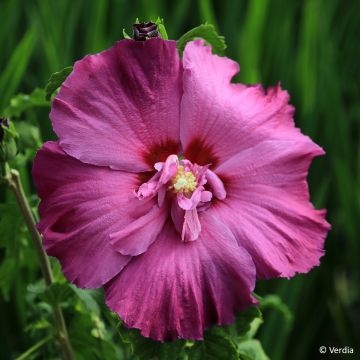
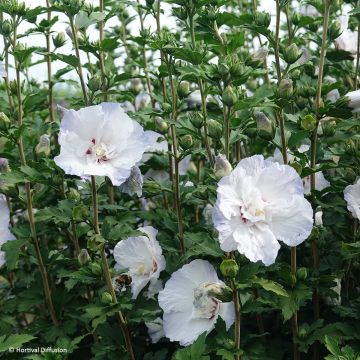


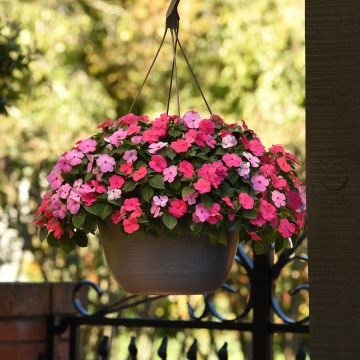
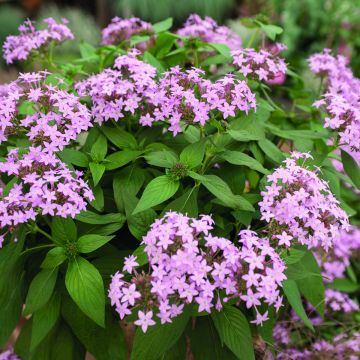
Comments